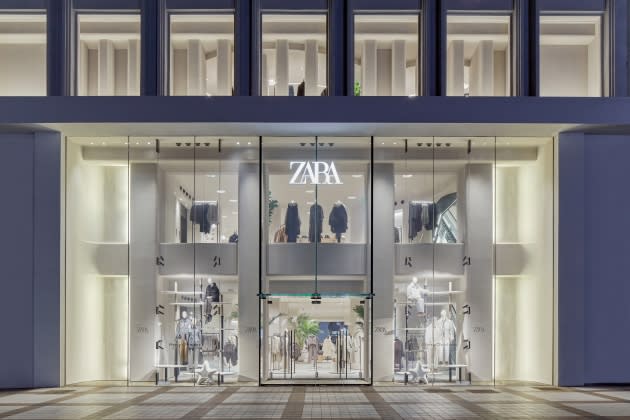Inditex Remains Resilient as Sales Rise 11 Percent in Q3 Amid Price Hikes

PARIS — Zara parent company Inditex is continuing its climb.
Sales increased 11 percent in the third quarter at the global fast-fashion giant, to 8.2 billion euros in the reporting period to the end of October. It was a slight slowdown from the second quarter, which saw sales rise 16 percent, but still demonstrated resilience despite global economic jitters.
More from WWD
White House Christmas Decorations 2022: All the Details, Photos & Theme
White House Respect for Marriage Act Signing With Cyndi Lauper, Sam Smith & More Photos
That trend seems to be holding steady as we head into the holiday shopping season. Store and online sales in constant currency between Nov. 1 and Dec. 8 increased 12 percent over the same pre-holiday period in 2021, the company said.
“We have had a very strong sales performance in the nine months of 2022, and this performance has continued during this period with autumn collections very well received by our customers,” said Inditex chief executive officer Oscar Garcia Maceiras in a call following the release of the results.
“The execution of the business model has also been remarkable despite a challenging environment. These are the reasons why sales EBIT and net income have reached historic highs both in the first nine months and in the third quarter of 2022,” he added.
Inflationary increases and the cost of sourcing were up 13 percent, but the company remains “rigorous” on its cost control.
Seeking to get ahead of the supply chain sourcing curve, the company increased its inventory inflow going into the year, which resulted in 27 percent increase of stock as of Oct. 31. As of Dec. 8, inventory levels were up 8 percent as the company moves into the holiday selling season. Chief financial officer Ignacio Fernandez emphasized that it is focusing on full-price sales and that its participation in big discount events such as Black Friday are “limited.”
This all comes as Zara is trying to transform its fast-fashion reputation by raising prices — by more than 5 percent since spring in anticipation of inflationary pressures — and upscale its offering since founder Amancio Ortega’s daughter Marta Ortega took over as non-executive chair on April 1.
The cost increases have been “a very focused exercise and it’s not across the board,” noted Fernandez, and are concentrated on the fashion collections and more upscale items. Prices will remain steady — for now.
“In the situation where there are issues, especially on the cost side, that we are required to adjust prices to defend our gross margin, we always do it in a very progressive way,” Fernandez said.
Zara has been looking to reframe its offerings with high-profile designer collaborations, including model Kaia Gerber, iconic 1990s designer Narciso Rodriguez, Studio Nicholson and former Lanvin jewelry designer Elie Top.
Following the opening of splashy flagships at the Battersea Power Station store in London and on Paseo de la Castellana in Madrid, Zara will unveil a new 38,000-square-foot flagship on the Avenue des Champs-Élysées in Paris. The new store will have separate spaces for shoes and handbags, lingerie and athletics.
The new store will also be integrated in its omnichannel vision — including a “store mode” for its Zara app that has been rolled out in 60 countries so far.
In the first nine months of the year, Inditex posted a 24 percent increase in net profit reaching 3.1 billion euros.
Sales were strong across the globe, the company said, though it did not break down results by region. In the U.S., its second largest market, sales saw a “strong rebound,” Fernandez said during the call.
China continued to be challenging due to rolling lockdowns, but as the country eases its zero-COVID-19 policy, the company’s outlook is positive and the country will remain a key market in the immediate and long term.
The company talked up its sustainability credentials, touting the release of its laundry detergent, codeveloped with BASF, to slow the release of microfibers into the water supply. It also said it plans to roll out its resale and repair platform, launched in October and now testing in the U.K., in additional markets in 2023.
However, the company shows no signs of decreasing production. Inditex noted it is present in 215 countries, but cited “low market share in a highly fragmented market” and aims to continue to up its numbers through organic sales and opening new stores.
Net income increased in the first nine months of the year by 24 percent to 3.1 billion euros, and EBITDA was up 20 percent to 6.5 billion.
Inditex, which also owns Pull & Bear, Massimo Dutti, Bershka, Stradavarius and Oysho brands, credited its resilience to a tighter supply chain with in-season production and near-shoring of its sourcing. The company has been heavily investing in updating stores with a sleeker look, as well as focusing on omnichannel integration.
Online growth continue apace and are expected to top more than 30 percent of total sales by 2024, it said.
